Call of Duty TTK Changes: Detailed Guide for Warzone Players
Updated On: November 12, 2025 by Aaron Connolly
What Is TTK in Call of Duty?
TTK stands for “time-to-kill.” It basically tells you how fast a weapon can drop an enemy, from your first shot to the last.
If you get a grip on TTK, you’ll pick better weapons for your style and get a real edge in gunfights.
Definition of Time-to-Kill
Time-to-kill measures the window between your first bullet hitting an enemy and the shot that finishes them.
We use milliseconds here—every split second matters.
The math is simple: TTK = (60 / RPM) x (Shots to Kill – 1).
RPM stands for rounds per minute, and shots to kill is just how many bullets you need to finish off a healthy enemy.
Say your gun fires 600 RPM and it takes 4 shots to kill. That’s a 300 millisecond TTK.
Lower numbers mean you’ll kill faster. Higher TTK? You’ll need to keep your aim steady a bit longer.
Every Call of Duty game handles TTK a little differently.
Vanguard let SMGs kill in less than 300ms, while Black Ops Cold War pushed assault rifles over 450ms.
Importance of TTK in Gameplay
TTK really shapes how we approach multiplayer and Warzone.
Shorter TTKs push players to rush and rely on twitch reflexes.
If TTK is fast, you’ll see a lot of run-and-gun tactics. People can take each other out before there’s even time to react.
When TTK slows down, players need to focus more on positioning and teamwork.
Quick win: Pull up weapon TTK charts before you drop in. It’s a quick way to tweak your loadout for whatever range you plan to fight at.
TTK also changes how weapons feel for different skill levels.
Guns with lower TTK let less experienced players get kills even if their aim isn’t perfect. Higher TTK, though, rewards those who can track targets and stay on them.
Factors Influencing TTK
A bunch of things can change a weapon’s base TTK in Call of Duty.
If you shoot from far away, damage dropoff makes TTK go up—so SMGs feel strong up close but weak at distance.
Headshot multipliers can really speed things up. Nail those, and you might shave 30-50% off your kill time.
| Factor | TTK Impact |
|---|---|
| Range | Higher at distance |
| Headshots | 30-50% reduction |
| Attachments | Variable effects |
| Enemy armour | Increased TTK |
Attachments play a big role too. Some boost damage or fire rate, others help with range.
If you’re in Warzone, armour plates make TTK go way up compared to multiplayer. Full armour can double or even triple the bullets you need.
Recent TTK Changes in Warzone
Warzone 2 Season 3 Reloaded shook things up with big TTK changes.
The devs slowed down close-range fights and tweaked weapon balance across all ranges.
They added new armour damage limits to stop those lightning-fast kills and buffed some weaker guns so they could hang in longer-range shootouts.
Key Adjustments in Season 3 Reloaded
Season 3 Reloaded brought in Maximum Armour Damage for all the main weapon types.
Assault rifles, battle rifles, SMGs, and LMGs all got hit with this change.
By capping how much damage you can do to armour at once, they tried to fix the problem where fights ended almost instantly up close.
SMGs and pistols got Minimum Armour Damage buffs. Now, they hit a lot harder at medium range than before.
These tweaks really changed what weapons make sense:
- Assault rifles: Slower kills up close, still good mid-range
- SMGs: Better at medium range, less dominant up close
- Battle rifles: More balanced for any distance
- Handguns: Actually usable as backup weapons
Comparison With Previous Seasons
Before this, Warzone 2’s TTK felt way too fast. Most gunfights ended before you could even blink.
The original Warzone had a slower TTK, which let players reposition or pull off a comeback if they survived the first burst.
Season 3’s update brought TTK more in line with the old Warzone. But instead of just nerfing weapon damage, they did it by changing how armour works.
Previous seasons had:
- SMGs deleting people instantly up close
- Pistols basically useless past 10 meters
- Whoever shot first usually won
Now you get:
- Longer close-range fights
- Secondary weapons that actually matter
- More chances to outplay or escape
Impact on Battle Royale Modes
These TTK changes really changed how we play Warzone 2 battle royale.
Now, squads have more time to call out enemies and plan their next move in the middle of a fight.
Quick win: Use the longer gunfights to reposition mid-battle. Don’t just sit still and hope for the best.
Building fights up close last longer, so movement and positioning matter more than just raw aim.
You can’t just rely on having the best gun anymore.
The changes especially help:
| Playstyle | Benefit |
|---|---|
| Tactical teams | More time for callouts and coordination |
| Casual players | Better chance to survive when surprised |
| Movement-focused players | More time to pull off fancy moves |
Warning: Some players say the slower pace feels less thrilling compared to the old, fast action.
Medium-range fights feel more fair now, even for guns that used to be only good up close.
There’s a lot more room for different loadouts, and the old meta isn’t so dominant.
Community Feedback on TTK Adjustments
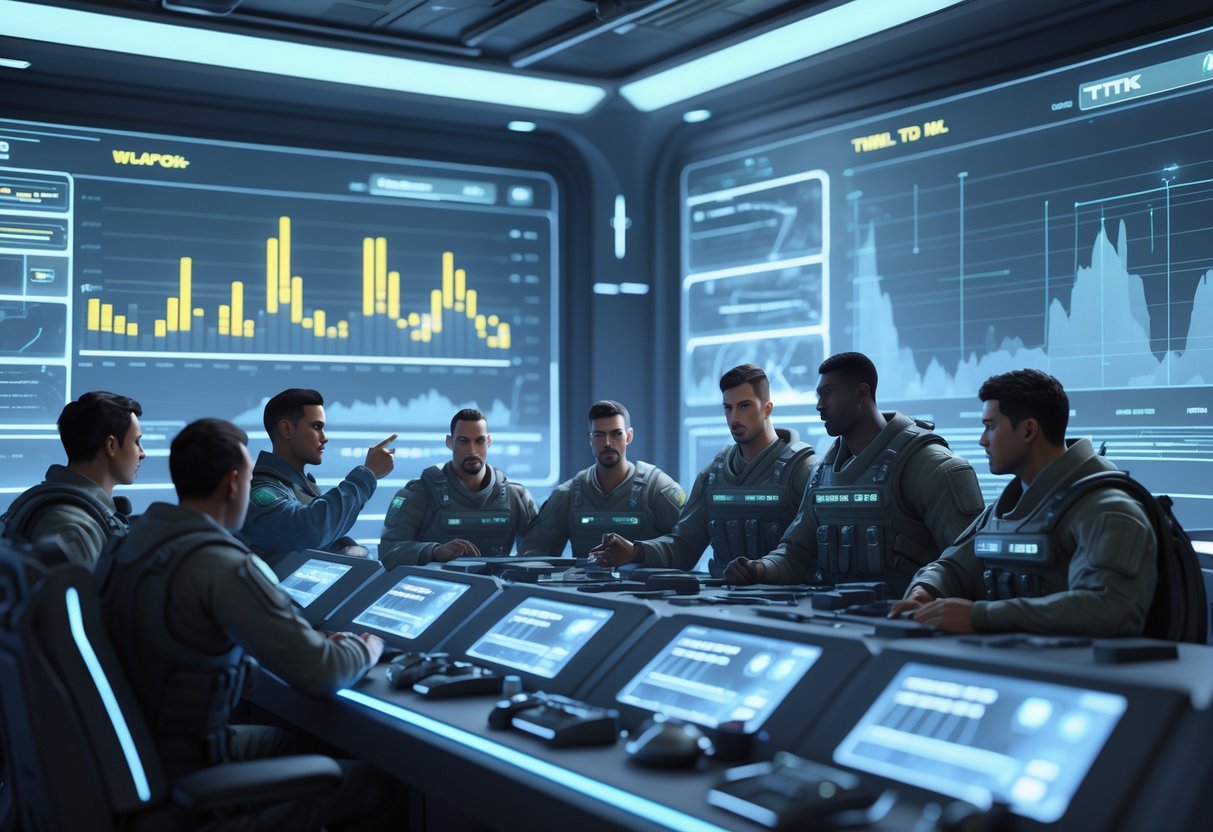
Players definitely have opinions about Call of Duty’s TTK changes.
Some want faster kills, others like longer fights. Raven Software and Activision have been asking for feedback all over—surveys, forums, you name it.
Player Opinions and Reactions
The community honestly can’t agree on TTK.
Lots of players hate getting spotted first and feeling like they never stand a chance.
Common complaints:
- If someone sees you first, you’re done 95% of the time
- Bad connections make fast TTK even worse
- New players can’t keep up with experienced ones
Some folks say the current TTK pushes away skilled players who want longer, more tactical fights. They miss the days when aim and positioning mattered more.
Others love fast kills. They think quick TTK rewards smart positioning and map sense. Long fights? Too chaotic for team modes, in their view.
Reddit’s split into three camps:
- People begging for slower TTK
- Players fine with how it is
- Folks wanting a compromise
When Verdansk came back with lower TTK, the debate got even louder.
Polls show the community’s pretty evenly divided.
Casual versus Competitive Perspectives
Casual players usually struggle with super-fast TTK.
They end up feeling outgunned and can’t really improve.
New players especially get frustrated—instant deaths don’t give them a chance to learn.
Most casuals want longer fights so they can actually practice their aim and movement.
Casual worries:
- No way to recover from bad positioning
- Not enough time to use movement tricks
- Hard to get better with weapons
Competitive players don’t all agree either.
Some pros like fast TTK because it rewards sharp aim. Others say longer fights show off more skill.
Pros point out:
- Fast TTK kills comeback chances
- Short fights limit advanced plays
- Lag or bad servers hurt more
Streamers and content creators usually want something in the middle.
They need action for viewers, but also want fair, competitive matches.
A lot of them suggest different TTK for casual and ranked playlists.
Developer Responses
Raven Software and Activision have been pretty active about collecting feedback.
They ran surveys asking about movement, weapon feel, and TTK preferences.
Season 3 Reloaded directly tackled player complaints.
Dev teams raised maximum damage caps to slow down close-range kills and tweaked minimum armour damage so weaker guns could compete at range.
Developer moves:
- Asked about sliding, mantling, and diving speeds
- Cut down weapon raise delays after parachuting
- Made equipment deploy faster
- Boosted sliding acceleration by 6%
Activision admitted the first Season 3 changes didn’t quite land.
They promised to keep checking player feedback and match data.
The devs say they’re trying to balance every range, but close quarters fights got the most attention.
Long-range TTK hasn’t really changed much.
They’ll probably keep adjusting TTK based on what players say and what the numbers show.
The team says they want to find a balance that works for both casual and competitive fans.
Weapon Categories Affected by TTK Changes
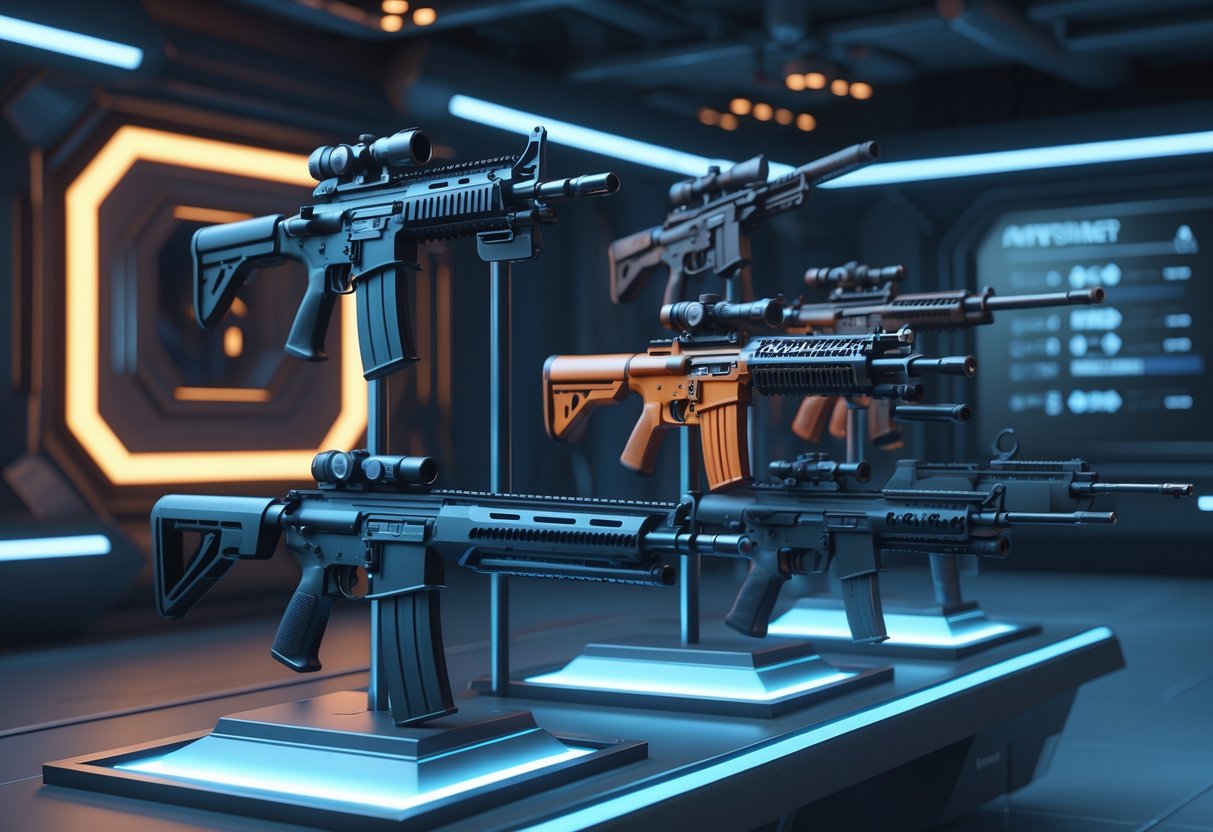
Recent Call of Duty updates have really gone after specific weapon types with TTK adjustments.
Assault rifles got hit with big damage multiplier nerfs, while SMGs saw nearly every gun in the class get tuned down.
Assault Rifles
Assault rifles took a big hit with TTK increases.
Season 4 Reloaded nerfed 17 rifles, mostly by dropping damage multipliers to shrink the gap between the best and worst.
They especially cut headshot multipliers.
The AK-47 (BOCW) dropped from 1.62 to 1.5, and the C58 went from 1.62 to 1.58.
They also knocked down upper torso multipliers.
The C58 and AK-47 (BOCW) went from 1.2 to 1.0, so you have to land more headshots to get fast kills.
The FARA 83 got it rough. Its max damage fell from 31 to 29, and recoil went up, making it harder to spray.
A few rifles got small buffs to help them keep up.
The Grau 5.56, for example, saw minimum damage go from 22 to 24, so it’s still decent at long range.
Submachine Guns
SMGs got the harshest nerfs this time around.
Fourteen SMGs took damage hits, and every single change was a nerf—shows how dominant they were up close.
Max damage dropped on favorites like the AK-74u (35 to 31) and LC10 (30 to 27), making close-range kills take longer.
They also slashed headshot multipliers.
The Milano 821’s headshot bonus went from 1.62 to 1.38, so precision shots don’t pay off as much.
Even the Nail Gun, which is newish, didn’t escape. Its max damage dropped from 50 to 46, and headshot multiplier went from 1.62 to 1.45.
They even slowed down the QBZ-83, cutting 3% off base move speed and 5% off ADS move speed—bad news for aggressive players.
Light Machine Guns
LMGs got a mix of buffs and nerfs.
They mostly focused on balancing the outliers, not just nerfing everything.
Some LMGs actually got stronger.
The M60’s max damage bumped up from 36 to 37, and its headshot multiplier rose from 1.5 to 1.6—pretty nice for melting enemies.
But meta picks took a hit.
The MG 82 got slower ADS speed, so you can’t scope in as fast.
The MG 34 got nerfed across the board: max damage dropped from 31 to 29, minimum damage from 28 to 27, and headshot multiplier from 1.5 to 1.4.
They also cut upper torso multipliers on several LMGs, so you can’t just spray the chest and expect easy kills anymore.
Close-Range TTK and Armour Damage Updates
Warzone developers rolled out a new “Maximum Armour Damage” system to slow down close-range gunfights. At the same time, they buffed minimum armour damage for weapons meant for longer ranges.
These changes hit assault rifles, SMGs, and light machine guns in different ways.
Maximum Armour Damage Introduction
The Maximum Armour Damage system puts a cap on how fast weapons can shred through player armour up close. This tweak mainly targets the weapons that usually rule short-range battles.
Assault rifles, battle rifles, submachine guns, and light machine guns all got Maximum Armour Damage values. These limits stop guns from melting armour plates in a blink.
Developers set a ceiling for armour damage per shot. If a weapon hits that ceiling, it just can’t dish out more armour damage, no matter what.
Players had been complaining about TTK being way too fast, especially up close. So, this system gives everyone a bit more time to react and actually fight back.
Now, close-range fights feel more tactical. Teams get a better shot at repositioning or healing in the middle of a firefight.
Effects on Popular Weapons
SMGs took the biggest hit from these TTK tweaks. Guns like the Fennec 45 and Lachmann Sub now need more time to break through armour plates.
Light machine guns also face new Maximum Armour Damage limits. These beasts used to dominate every range but now have to play by the new close-combat rules.
Assault rifles still have their versatility, but the new caps mean the M4 and STG44 can’t just erase opponents instantly up close.
Handguns and some SMGs, on the other hand, got Minimum Armour Damage buffs. That makes them more useful at medium ranges, where they used to struggle.
The Lachmann Sub actually benefits both ways—it’s got caps at close range, but it also hits harder at distance now.
Battle rifles keep their spot as mid-range options. The new system nudges them away from being too strong up close.
Updated Weapon Balance
SMGs now demand more skill and smarter positioning. Players can’t just count on raw damage to win every close fight.
Mid-range weapons got a nice boost from better minimum armour damage. Handguns and certain SMGs can finally go toe-to-toe with rifles at medium distances.
| Weapon Type | Close Range | Mid Range | Long Range |
|---|---|---|---|
| SMGs | Nerfed | Buffed | Unchanged |
| Assault Rifles | Nerfed | Slight buff | Unchanged |
| LMGs | Nerfed | Unchanged | Unchanged |
| Handguns | Unchanged | Buffed | Unchanged |
The weapon meta feels a lot more balanced now. No single weapon type just dominates every range anymore.
Players are mixing up their loadouts more. Some are even giving a shot to guns that used to get ignored, thanks to those minimum damage buffs.
Positioning matters more than ever. Teams can’t just rely on nuking people instantly—they’ve got to think a bit more.
Mid- to Long-Range TTK Modifications
Recent updates really shook up damage output for weapons built for mid-to-long-range fights. Assault rifles and light machine guns now hit harder against armoured enemies at a distance. You can see some clear performance gaps between weapon classes in battle royale matches.
Minimum Armour Damage Buffs
Assault rifles now deal 15-20% more damage to armoured players when you’re shooting from over 40 metres away. That’s a pretty noticeable jump.
Light machine guns got an even bigger boost. The new PML 5.56, for example, dishes out strong damage at long range and barely loses power over distance. LMGs like the XMG can drop a fully armoured enemy in six or seven shots from more than 60 metres out.
Key damage improvements:
- Assault rifles: +15% damage to armoured targets
- Light machine guns: +25% damage retention at range
- Semi-auto marksman rifles: Improved max damage range
These changes focus on the damage ranges where ARs and LMGs compete with snipers. Players have noticed they can finish fights faster when shooting across open ground.
Performance by Weapon Class
Assault rifles now own the 30-70 metre range. The GPR 91 and Krig both pack a punch and let you move around more easily than LMGs.
Light machine guns rule at 70 metres and beyond, though you do move like you’re wading through mud. That’s fine if you’re the type to hold down a spot instead of running all over.
Current weapon hierarchy at range:
- 30-50m: Assault rifles (GPR 91, ABR A1)
- 50-80m: Light machine guns (PML 5.56, XMG)
- 80m+: Sniper rifles still come out on top
SMGs just can’t keep up past 25 metres. The C9 and LC10 are still fun up close, but their damage drops off fast.
Marksman rifles are a bit stuck in the middle. They handle better than LMGs but don’t hit as hard as ARs at similar ranges.
Influence on Meta Choices
Right now, battle royale loadouts mostly revolve around assault rifles as primaries. Most pros are running AR/SMG combos instead of the old SMG/Sniper setups.
The GPR 91 shows up in about 40% of top-tier loadouts, mainly because it’s so good at different ranges. Players like having a gun that can do a bit of everything.
Popular meta combinations:
- Aggressive: GPR 91 + C9
- Defensive: PML 5.56 + LC10
- Balanced: Krig + whichever SMG you like
Ground loot has changed too. Assault rifles pop up more often than SMGs in battle royale, so you can grab something decent for mid-range fights right from the start.
The Stadium Resurgence mode really highlights these changes. The longer sightlines mean you need weapons that can hit hard at range, not just something for close-quarters chaos.
Movement Changes Impacting TTK
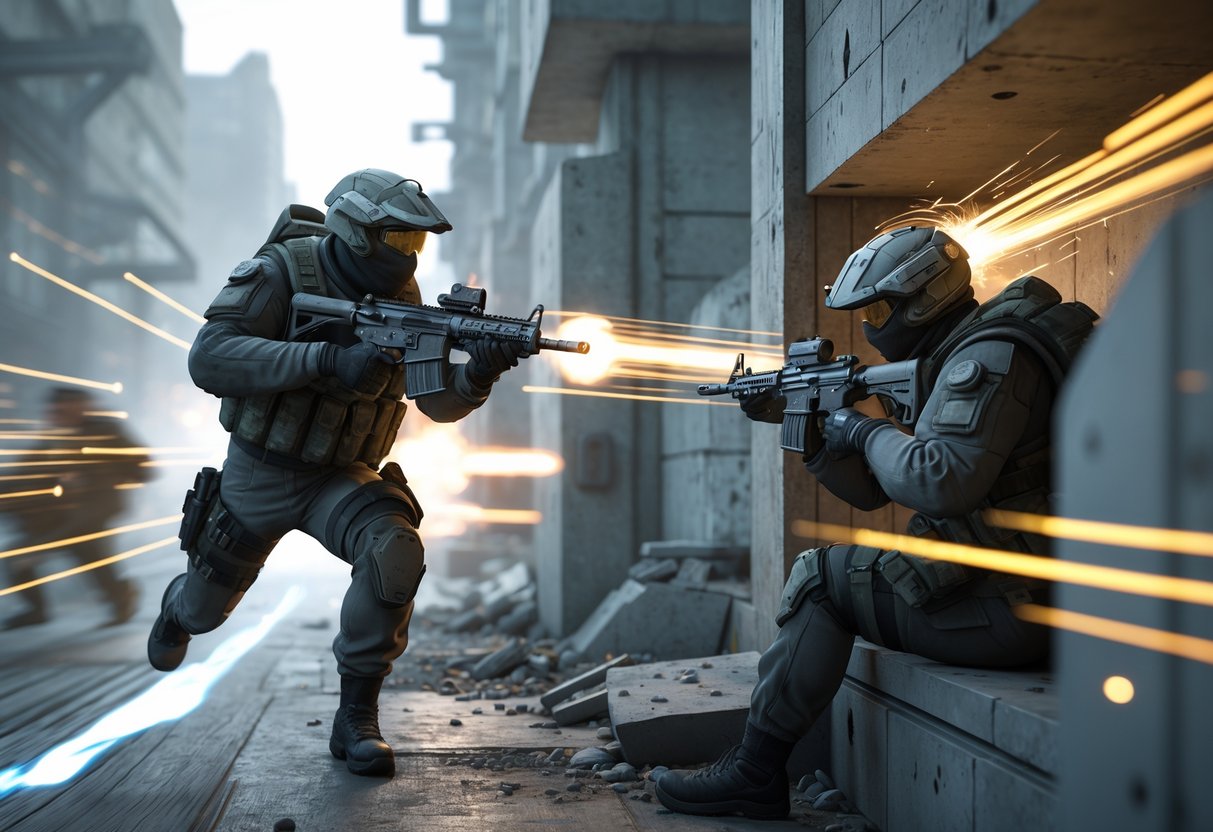
Movement mechanics and time-to-kill go hand in hand, especially with new tweaks to parachuting and sliding speeds. Navigation improvements also play a big part in how fast you can get into or out of a fight.
Parachute and Sliding Adjustments
Season 3 Reloaded made it so you can shoot a lot faster after landing from your parachute. The weapon raise delay dropped by 30%.
Now, you’re not stuck defenseless after dropping in. You can get your gun up and start firing almost right away.
Sliding got a boost too. The initial acceleration when you start a slide is up by 6%.
Faster slides mean you can dash between cover more quickly during fights.
With these changes, you get shorter windows before someone can shoot you—or before you can shoot them. Aggressive players who love dropping into the action are definitely making the most of it.
Mantling and Navigation Tweaks
You can mantle over taller obstacles with just one hand now, thanks to a higher threshold. That means you can leap over more things without needing a clunky two-handed animation.
This opens up new ways to push or escape during fights. Quick vaults let you flank or bail out when things get dicey.
Camera sway while walking and sprinting dropped as well. With less screen movement, you can track targets more easily and land shots while on the move.
These tweaks give players new options for sneaky routes and better aiming on the go.
Faster navigation changes up TTK, too. You can close gaps or escape bad situations before someone finishes you off. It kind of shifts the pace of every fight in Warzone.
TTK in Different Warzone Modes
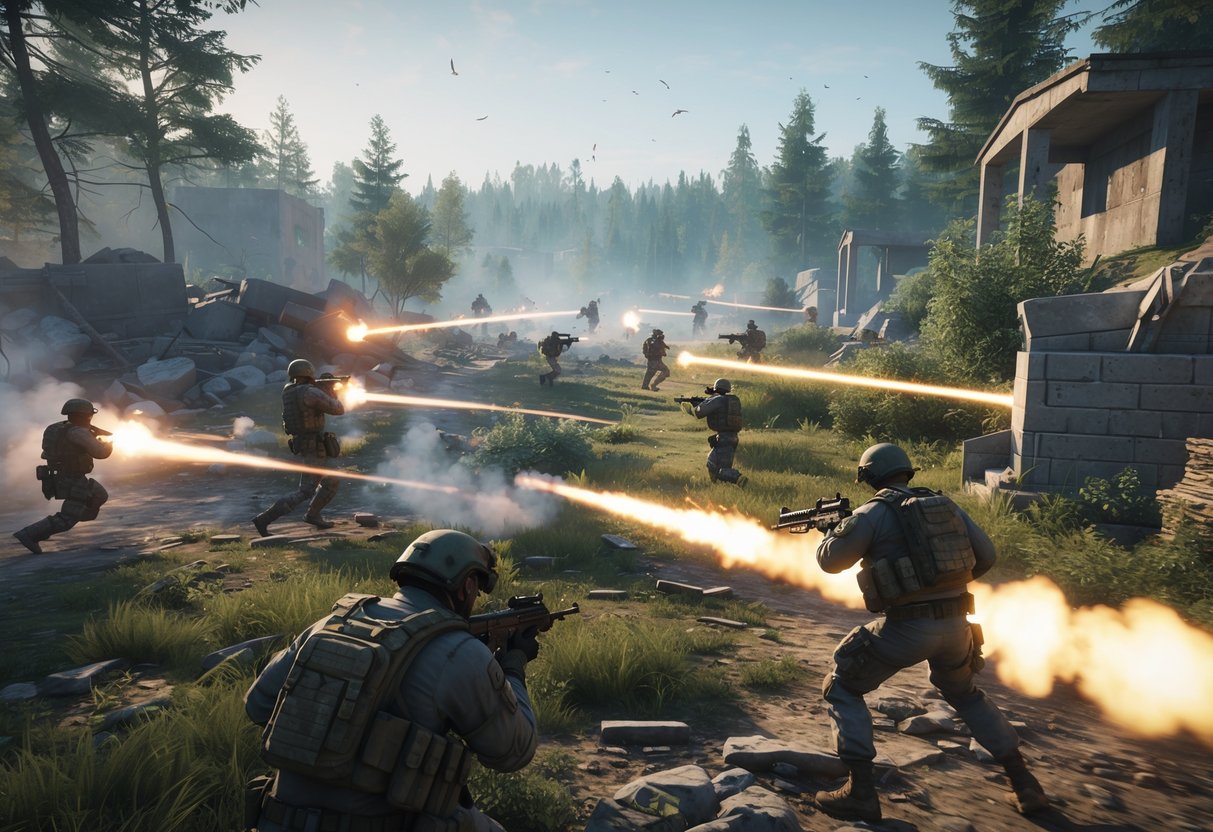
TTK isn’t the same across Warzone’s different modes. Some modes let you drop people super fast, while others give you a little more breathing room. That affects which guns you pick and how you play.
Rebirth Island
Rebirth Island has always had a faster TTK than regular battle royale. Players start with less health, so fights get wild and end quickly.
With less health, assault rifles and SMGs become scary at close range. You really have to use cover and think about positioning, or you’ll get wiped out in seconds.
Key differences in Rebirth:
- Lower health at spawn compared to main Warzone
- Quicker weapon swaps
- Armour doesn’t protect as much
Most guns only need 3-4 shots to finish someone, not the 5-6 you see in standard modes. It feels more like an arcade shooter, where quick reflexes are everything.
Since you can respawn, people play more aggressively. Teammates can bring you back, so risky plays are a lot more common.
Vanguard Royale versus Standard Battle Royale
Standard Battle Royale usually gives you 150 HP, no matter if you’re solo or playing with a squad. That keeps TTK pretty consistent.
Vanguard Royale shook things up by locking you to World War 2-era guns. Those weapons had their own damage profiles, so the fights felt a bit different.
Health differences:
- Standard BR: 150 HP across the board
- Vanguard Royale: Health and armour varied by weapon
- Armour plates didn’t always work the same
SMGs got damage boosts up close in Vanguard Royale, and rifles stayed solid at range.
The TTK felt a bit faster in Vanguard because you couldn’t use modern guns with their predictable stats.
Iron Trials Mode
Iron Trials is the slowest TTK mode out there. You get a huge health pool—around 250 HP.
Most weapons need 7-10 shots to down someone. Fights take way longer, and you can’t just run and gun.
Iron Trials changes:
- 250 HP at spawn
- Health regenerates slower
- Fewer armour plates around
- Gas deals less damage
Weapon choice really matters here. High-damage guns like snipers and LMGs become way more valuable than rapid-fire SMGs.
Longer fights mean you need good positioning and teamwork. You can actually reposition or flank during a fight instead of getting insta-deleted.
Supply boxes don’t have as many plates, so every one counts. Managing your health turns into a real strategy, not just a side thing.
Role of Developers in TTK Updates
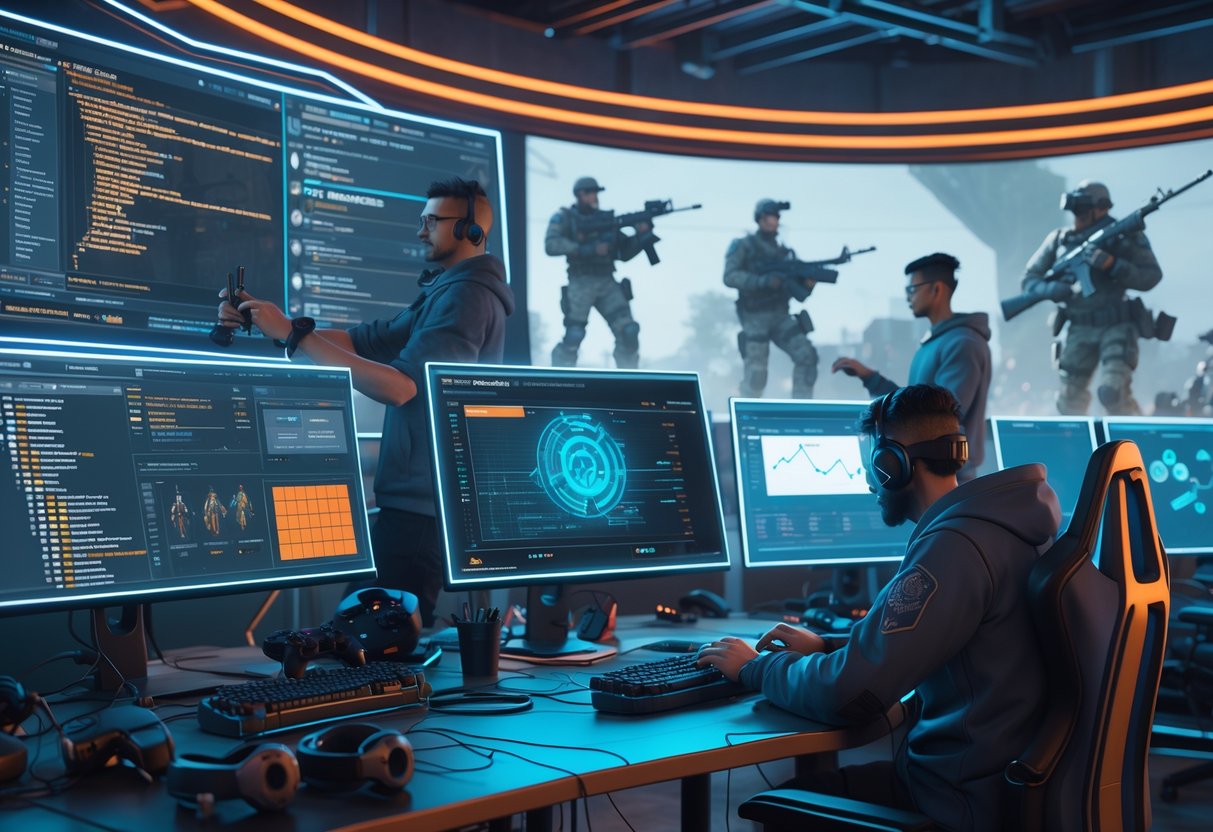
Game developers keep shaping TTK by digging into data and listening to the community. Raven Software usually leads the charge, while Activision sets the big-picture goals and handles communication.
Raven Software’s Involvement
Raven Software runs most of the TTK tweaks in Call of Duty. They look at player data and feedback to figure out when to make changes.
The team sped up TTK on Verdansk during Season 3, aiming for a more casual-friendly game. They made that call after checking out stats and hearing what players wanted.
Key responsibilities include:
- Watching weapon performance numbers
- Testing TTK changes before they go live
- Balancing casual and competitive play
Raven works with content creators to talk through possible changes. That helps them see how tweaks might hit different parts of the player base.
After a patch drops, they keep an eye on how things go. They check if players stick around and if people actually like the new balance.
Activision’s Strategy
Activision calls the shots on TTK direction for the whole franchise. Their main goal is keeping players engaged and bringing in new faces.
They promised movement and TTK updates at the start of Season 3, which shows they’re paying attention to what the community wants.
Strategic priorities include:
- Keeping casual players interested
- Making sure things stay fair for competitive folks
- Responding quickly to feedback
Activision coordinates between all the studios working on Call of Duty. That way, TTK changes fit into their bigger plan.
They also look at market research and player retention numbers. If people start dropping off, that can push them to tweak TTK again.
Communication With the Community
Developers talk TTK changes with content creators and pro players pretty often. These chats give them real insight into how updates actually land in-game.
Lately, you can find videos where devs break down why they tweak TTK. That kind of openness helps players see the reasoning behind the scenes.
Communication methods include:
- Direct meetings with content creators
- Community updates and patch notes
- Social media discussions
The dev team listens to community requests about TTK adjustments. They point to player feedback when they explain what’s coming up.
Timing, though, is all over the place. Sometimes we get detailed explanations, other times updates just drop with barely a heads-up.
How TTK Changes Affect the Weapon Meta
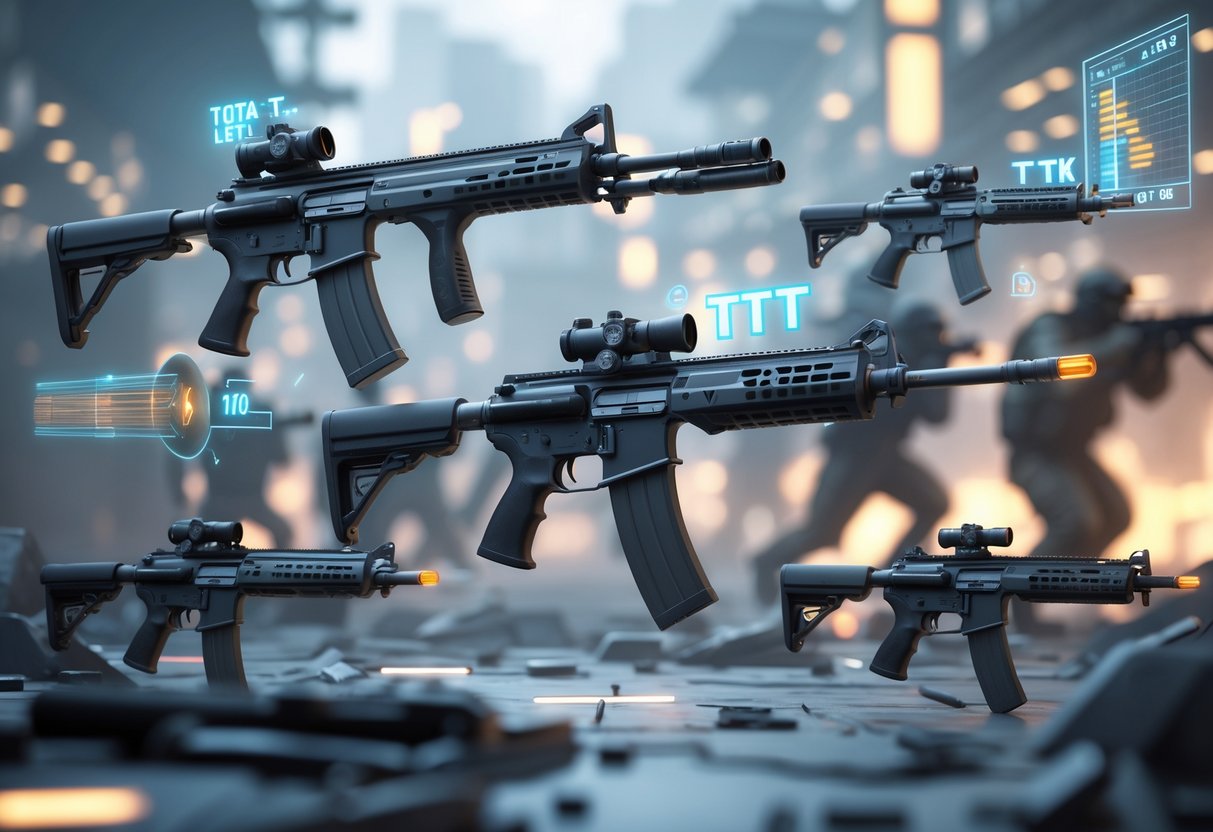
When devs adjust TTK, you can see the meta shift almost overnight. Change the damage or health pools, and suddenly yesterday’s favorite gun is gathering dust.
Recommended Weapon Loadouts
Back in Season 5, the STG44 shot up as a top pick with its wild 600ms TTK. This rifle absolutely shreds at mid-range—think up to 38 meters, especially on Resurgence maps like Rebirth Island.
If you’re fighting up close, pair the STG44 with a meta SMG. That way you’re not stuck when the fight gets personal.
Current Meta Weapons by Range:
- Close Range: PPSH-41, Owen Gun, Welgun
- Mid Range: STG44, MCW JAK Raven Kit
- Long Range: TAQ Eradicator, BP50
After the last round of changes, the DTI battle rifle turned into a rock-solid primary. It hits hard at long range, stays accurate, and the recoil isn’t too punishing.
Honestly, it pays to build your loadout around your main engagement range, then cover your weak spots with a backup.
Meta Shifts After TTK Updates
Season 5’s balancing changes really shook things up. The Holger 26 took a big hit, while the STG44 just climbed right to the top.
TTK tweaks aren’t just about raw damage. When health pools go up, guns with big mags get a lot more appealing.
Recent Meta Changes:
- STG44: Introduced with 600ms TTK, became instant meta
- Holger 26: Nerfed hard, fell out of favor
- TAQ Eradicator: Got more consistent at long range
- DTI: Accuracy and damage both improved
Some weapons, like the Superi 46 and Kar98k, just keep hanging in there. They’ve survived plenty of meta changes.
Word of advice: Don’t jump on every new meta right away. Let the community figure out what actually works before you swap your whole loadout.
Adapting Playstyles
TTK changes really force you to rethink how you play. Fast-killing guns like the STG44 reward players who push up and snap onto targets.
With the STG44, keep in mind it drops off after 38 meters. Try to stick near cover and steer clear of those long-range duels.
Playstyle Adjustments:
- Aggressive Players: Push with faster TTK weapons up close
- Defensive Players: Use guns that stay consistent across ranges
- Support Players: Pick weapons that fill your squad’s gaps
Battle royale and Resurgence modes need different mindsets. The STG44 feels great on smaller maps, but it’s not as hot when you’re stuck in a sniper fight on big maps.
Think about the fights you usually get into before you chase the latest meta. What works for streamers might not fit your style.
Best Practices for Adapting to TTK Changes
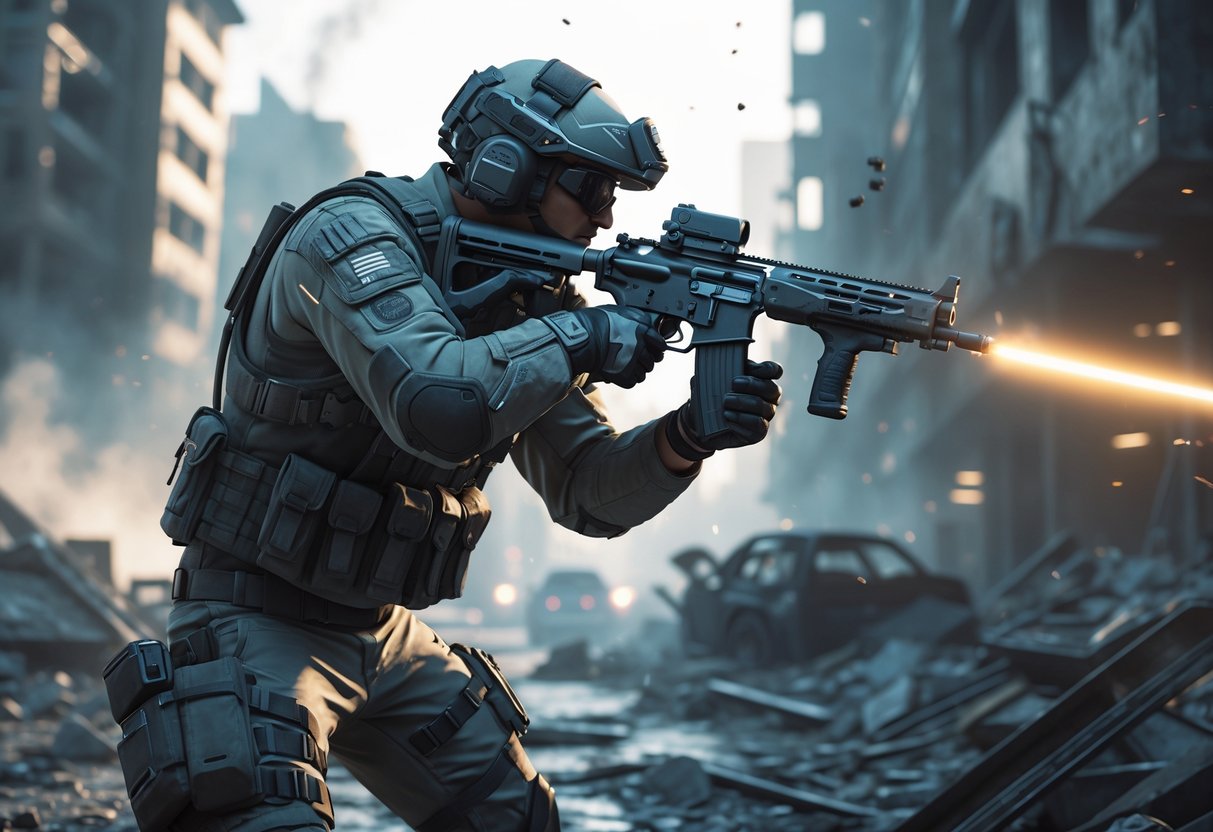
When devs mess with TTK in Call of Duty or Warzone, you’ve got to adjust fast. Sticking to old habits just leads to more deaths and, honestly, some rage.
Adjusting Your Strategy
Fast TTK means you can’t just sprint around like before. Positioning suddenly matters a lot more than blind aggression.
When TTK drops, cover becomes your best friend. Use walls, boxes, whatever you can find. Pre-aim those common angles—you want the first shot, trust me.
Movement changes everything. Slide-cancelling and jump-shotting don’t work the same once TTK speeds up. It’s worth testing your moves in the firing range.
You’ve got to know the map. New sight lines and rotations become important, and what worked last season might get you killed now.
Update your loadouts. Your go-to SMG might not cut it anymore. Check out what’s topping the community tier lists after each patch.
Teamwork matters more than ever. Call out enemies quickly and back up your squad right away. Lone wolves get deleted fast in a quick TTK meta.
Tips for Different Playstyles
Aggressive players need to change things up the most. You can’t just rush and hope for the best anymore.
Use more tactical equipment—stuns and smokes make pushing safer. Don’t just sprint into buildings; clear them first.
Pick your fights with care. Go in when you’ve got cover or the high ground. Open fields? Maybe think twice.
Defensive players actually get a bit of an edge now. Your patience pays off.
Hold strong angles and longer sight lines. Fast TTK punishes sloppy peeks. Set up so you can bail out if things go south.
Support players get more important, too. Your team needs info and backup constantly. Stick close to aggressive teammates and keep an eye on their flanks.
Call out enemies right away. In fast TTK matches, quick comms can save lives.
Future Directions for TTK in Call of Duty
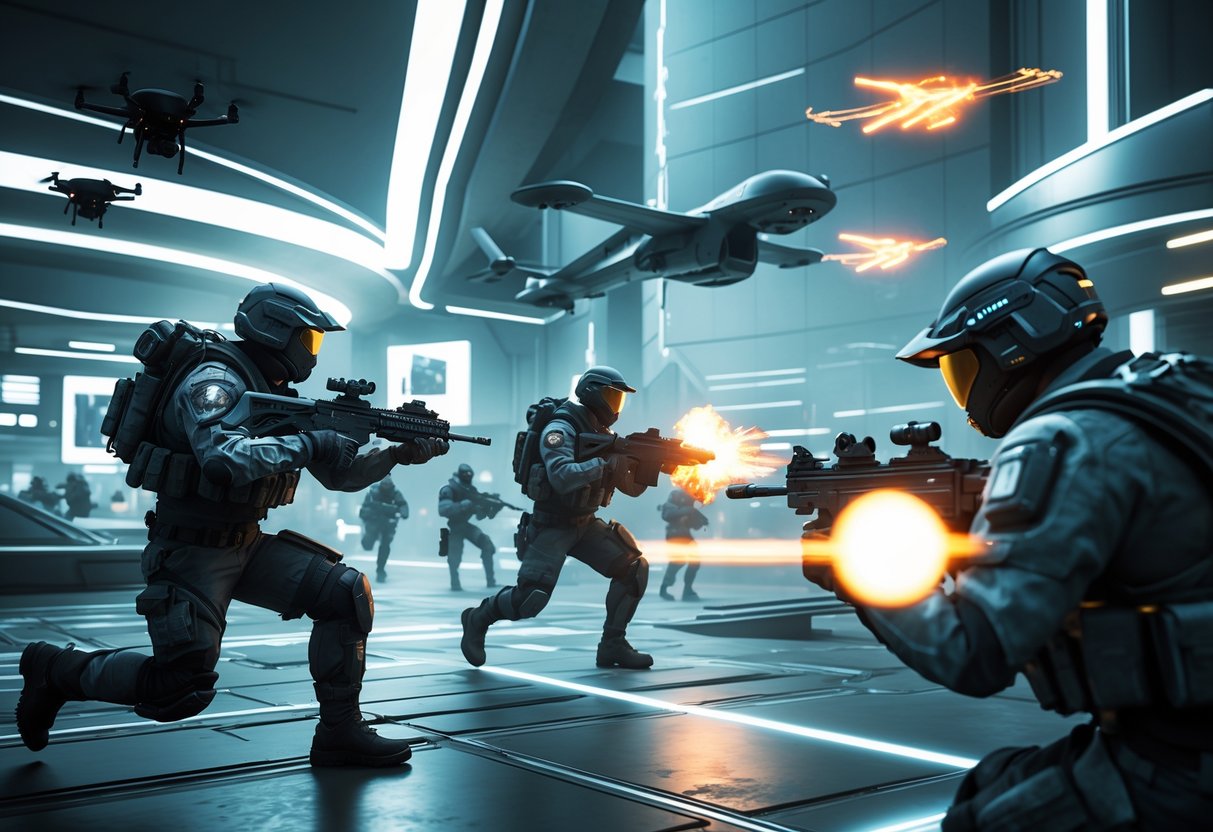
Call of Duty devs keep an eye on player feedback and adjust their TTK approach as needed. Activision’s roadmap hints at more targeted weapon balancing instead of big sweeping changes.
Developer Roadmap and Upcoming Updates
Pete Actipis, Warzone’s game director, says the team is “always evolving” how they handle TTK. Right now, they’re happy with Verdansk’s faster TTK, but they’ll tweak things if the community pushes for it.
Activision’s current priorities include:
- Nerfing or buffing specific weapons, not just blanket TTK changes
- Keeping an eye on CR-56 AMAX and HDR dominance
- Balancing casual play with competitive skill gaps
The devs want to keep some skill in gunfights. Movement still matters if you want to outplay people.
Look out for smaller updates each season. They’ve moved away from wild TTK swings that used to split the community.
Predictions for Community Preference
Players can’t agree on whether fast or slow TTK is better. Casuals seem to like faster TTK, while competitive folks want more room to show off their skills.
Here’s what’s trending:
- Casual players lean toward faster TTK for easier games
- Competitive players want slower TTK for more skill expression (mechanical skill)
- Content creators usually back balanced changes that keep the game fun
Future TTK tweaks will probably target certain weapon types instead of changing everything at once. That way, devs can keep things fair without ticking off half the player base.
Season 3’s changes will probably steer Activision’s TTK plans for a while. Feedback and player numbers give them the data they need to make the next call.
Frequently Asked Questions

Recent Call of Duty updates have really shaken up weapon damage and movement, changing how quickly you can drop opponents. These changes hit everything from SMG brawls to AR duels.
What are the latest adjustments to weapon time-to-kill in the new Call of Duty update?
Season 3 Reloaded brought in a new “Maximum Armour Damage” stat for ARs, battle rifles, SMGs, and LMGs. This slows down close-range kills by capping how fast you can break armour.
SMGs and pistols also got minimum armour damage buffs, so they’re not as weak at mid-range anymore.
The devs wanted to fix complaints about dying too fast. Now, you get a bit more time to react in close fights.
How have the recent balance patches affected the overall pace of multiplayer matches?
Gunfights last longer now, especially up close. You can’t just melt people instantly with busted combos like before.
Movement changes help balance that out. The 30% cut in weapon raise delay after parachuting keeps things moving, even with longer kill times.
Mid-range fights are more common, and weaker guns now have a place. That means more variety in loadouts and playstyles.
Could you explain how to adapt your playstyle to the updated weapon damage profiles?
Focus on your positioning, not just rushing. With longer TTK, surprising enemies isn’t a guaranteed win.
Work on sustained aim and recoil control. Longer fights mean you’ve got to track targets better since they have time to fight back.
Try out weapons that fit the new damage model. SMGs and pistols are better at medium range, but some ARs might feel sluggish up close now.
Use cover more during fights. That extra time lets you bail out or reposition if things go bad.
What do the changes to time-to-kill mean for competitive Call of Duty gameplay?
Pro matches will probably see more focus on positioning and teamwork. Solo hero plays won’t win as many fights when kills take longer.
Team shooting is more important. When you coordinate, you can drop targets faster than trying to go it alone.
Map control might shift to mid-range areas. Spots that used to be weak could get stronger with better weapon balance.
Expect longer rounds and more kills overall. Longer gunfights naturally stretch out matches.
Are there any tips for dealing with the modified time-to-kill in the latest season?
Pre-aim those common angles—you need every edge in longer fights. Quick reactions are still huge, even if kills aren’t instant.
Watch your ammo. Longer fights chew through mags, so reload and bring extras.
Keep practicing your movement. The new 6% slide boost and higher mantling open up different plays.
Don’t be afraid to disengage. With longer TTK, you can actually escape and reset if you get caught out.
Have any specific weapon classes been impacted significantly by the time-to-kill alterations?
SMGs got the biggest boost with those minimum armour damage buffs. Now, they’re actually decent at medium range—not just for point-blank chaos.
Assault rifles, battle rifles, and LMGs all hit new caps for maximum armour damage. That change really cuts into their close-range power, which used to be kind of ridiculous.
Handguns surprised a lot of folks with their damage buffs. These secondaries can finally pull their weight during mid-range skirmishes.
Sniper rifles and marksman rifles? Not much changed there. They still fill that long-range elimination role, just like always.

